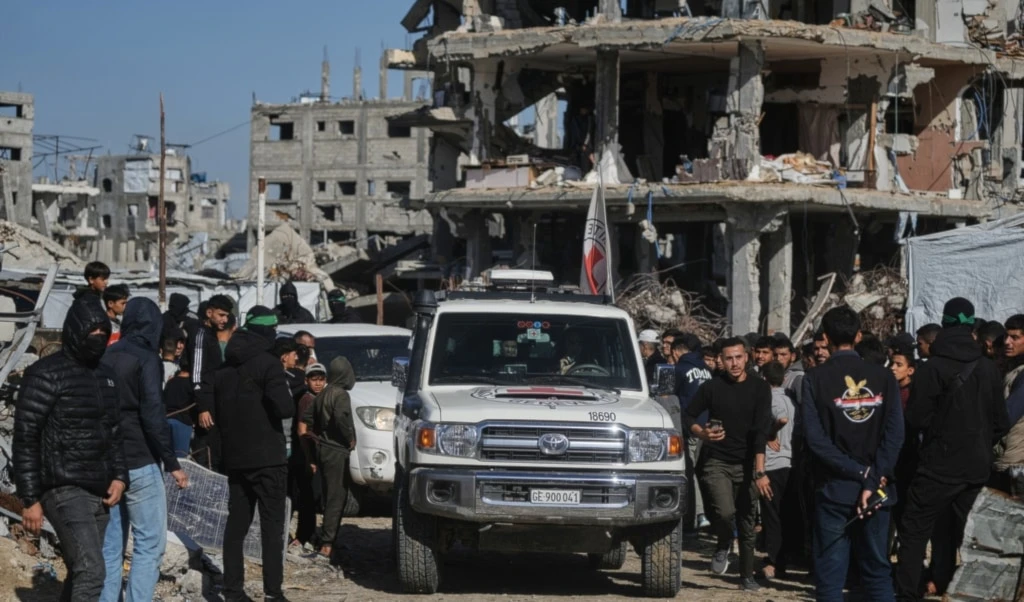Depleted by foreign wars, US seeks to re-arm for another confrontation
Facing depleted missile stockpiles after aiding Ukraine and "Israel", the Pentagon is pushing US arms makers to vastly increase production amid fears of a future conflict with China.
-

In this photo provided by the South Korea Defense Ministry, a US AC-130J Ghostrider fires an AGM-114 Hellfire missile during the joint aerial drills between South Korea and the United States, over the Korean peninsula in South Korea, Thursday, June 20, 2024. (South Korea Defense Ministry via AP)
Facing critically low missile reserves after extensive support to Ukraine and "Israel", the Pentagon is urging US weapons manufacturers to ramp up production, at times doubling or even quadrupling output, to prepare for what it perceives as a potential large-scale conflict with China.
Officials have identified 12 priority missile systems for accelerated manufacturing, including Patriot interceptors, Standard Missile-6 (SM-6), Terminal High Altitude Area Defense (THAAD) interceptors, and Joint Air-to-Surface Standoff Missiles.
Experts told Responsible Statecraft that replenishing these stockpiles is essential for US readiness but warned the Pentagon’s ambitious targets face major hurdles, ranging from time and cost to industrial capacity, without significant long-term financial backing from the Department of Defense.
They also cautioned that Washington must reassess its global military commitments, particularly in Ukraine and "Israel", before depleting its own stores further. As one analyst put it, the US must “put the much-needed focus back on the US national interest, even if that means turning off the spigot for other countries.”
What it takes to ramp up production
Analysts say the scale of missile manufacturing the Pentagon envisions would require several years and possibly new production facilities.
Mark Cancian, a senior advisor at the Center for Strategic and International Studies and retired Marine Corps colonel, told RS that if adequate funding were available, “the US defense industrial base could double the production of many missiles over about two years,” largely by expanding factory shifts and hiring more workers.
However, he noted that timelines differ by missile type and that higher output would likely demand new infrastructure.
Defense writer Mike Fredenburg was more skeptical, saying, “Even with a new contract firmly in place, I could easily see it taking four years or more to double production.”
“My gut is — to try to quadruple production? [It is] not going to happen — at least not quickly,” he said, emphasizing, “We do need to replenish our missiles. We burnt through them.”
Fredenburg estimated in August that since 2023, US operations in support of "Israel’s" wars on Gaza and Iran, along with its campaign against Yemen, consumed roughly 33% of the Standard Missile-3 (SM-3) stockpile and 17% of the SM-6 inventory. The US used a quarter of its THAAD interceptors during the Israeli aggression on Iran alone. The Guardian reported in July that only about 25% of Patriot interceptors required for US military plans remain, after many were transferred to Ukraine.
Limits of the defense industrial base
Fredenburg warned that the US defense industry lacks the capacity to deliver the rapid expansion the Pentagon desires.
“We have a peacetime defense industrial base, and we've had that for decades…we're not really set up to quickly produce things,” he said. “We don’t know how much more capacity they can squeeze out of existing facilities.”
Financial constraints also loom large. The “Big Beautiful Bill,” passed earlier this year, allocates $25 billion over five years for munitions, but the Pentagon’s production ambitions could cost “many tens of billions” more, Fredenburg noted.
The price tags underscore the challenge: Lockheed Martin was awarded nearly $10 billion in September to produce just under 2,000 PAC-3 Patriot interceptors, several million dollars apiece. The SM-6 missile costs around $4.3 million each.
Beyond assembly, extensive testing adds months of delays and hundreds of millions in costs.
Even less complex munitions have proven difficult to scale. “They've been trying to build up 155 millimeter shell production, which is… relatively simple compared to missiles. And they've been having trouble doing that,” Fredenburg said. “What makes us think that they're going to be able to ramp this production up massively for much more sophisticated, more complex, more expensive weapon systems?”
Lofty ambitions vs industrial reality
Experts doubt the Pentagon’s goals will materialize without firm, long-term contracts and direct government investment.
“All we're saying so far is that we want to urge the defense industrial base to make these new capabilities, build new factories, get new weapons, equipment,” Lt. Colonel Daniel Davis said on his Deep Dive podcast. “You need a lot more than just ‘we should,’ or, we ‘urge you to,’ if you really want anything to happen.”
Jennifer Kavanagh, senior fellow and director of military analysis at Defense Priorities, agreed that while boosting missile supplies is essential for readiness, the Pentagon’s targets may be unrealistic.
“It is not clear that contractors can meet [the Pentagon’s] targets, especially without additional federal funding to expand production and some way to find and train more workers,” she told RS.
How the US got here
The Pentagon’s current shortage stems from years of heavy reliance on US munitions in ongoing wars, particularly in Ukraine and "Israel", where usage has far outpaced replacement rates.
“We've been involved with the Ukraine war since 2022. And we've known what kind of, and how many [American munitions] are being used over there," Fredenburg stressed.
Critics argue that Washington has failed to balance foreign commitments with maintaining its own defense readiness.
“In recent years, the United States has wasted a ton of missiles and air defense interceptors on conflicts that are not in its vital interests,” Kavanagh told RS. “This includes those in the Middle East and in Ukraine.”
She warned that ramping up missile production to sustain foreign wars risks repeating the same pattern. “Speeding up munition production so that the United States can send those munitions abroad or expend them in conflicts that do not have implications for vital US interests is a waste of resources.”
“As the US supply of advanced munitions becomes larger,” Kavanagh concluded, “it will always be tempting for American leaders to squander some portion in wars of choice. This is a risk of the new effort to build missile stockpiles.”
Read more: CIA shifts focus to China as top threat amid tech war: Axios

 6 Min Read
6 Min Read








